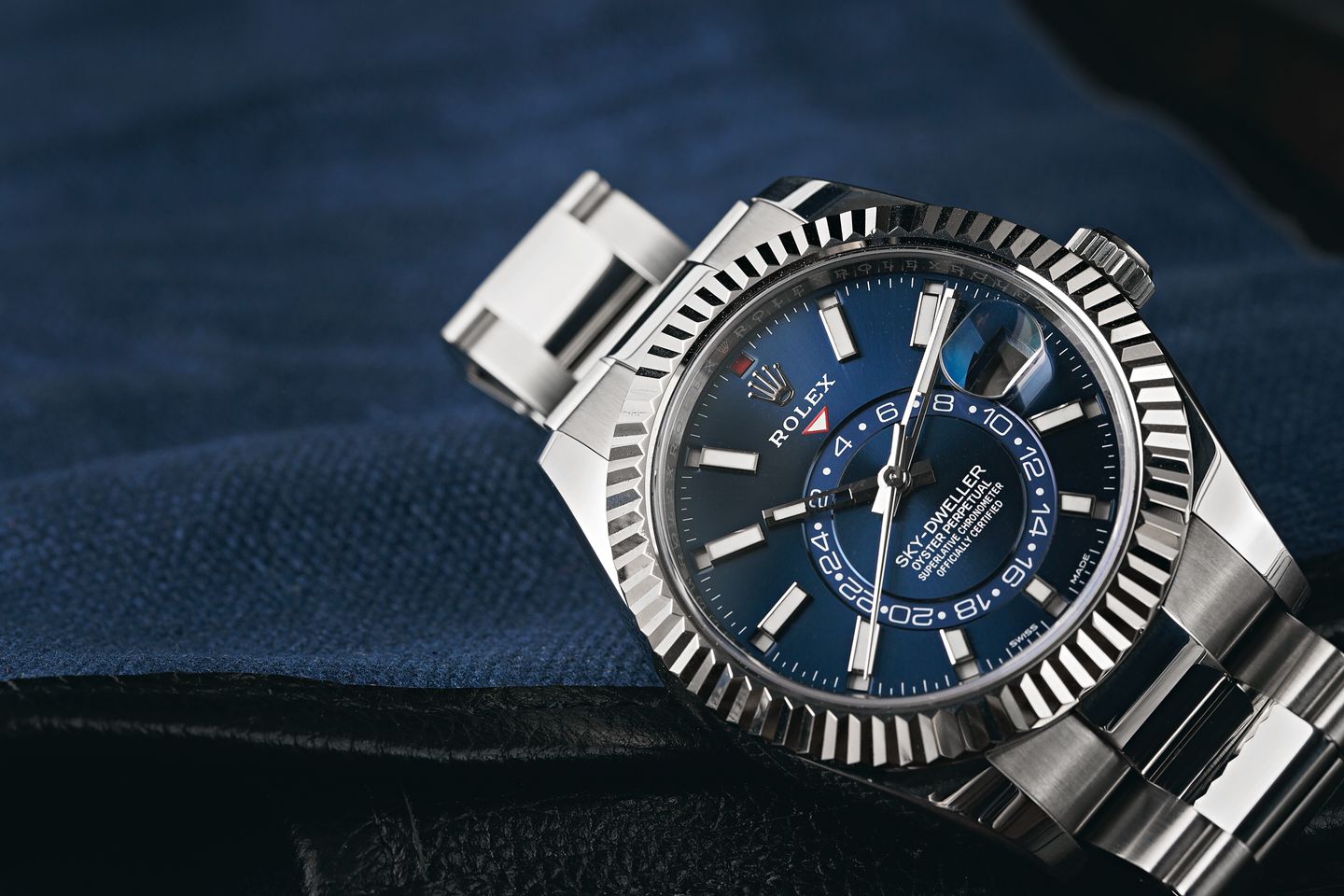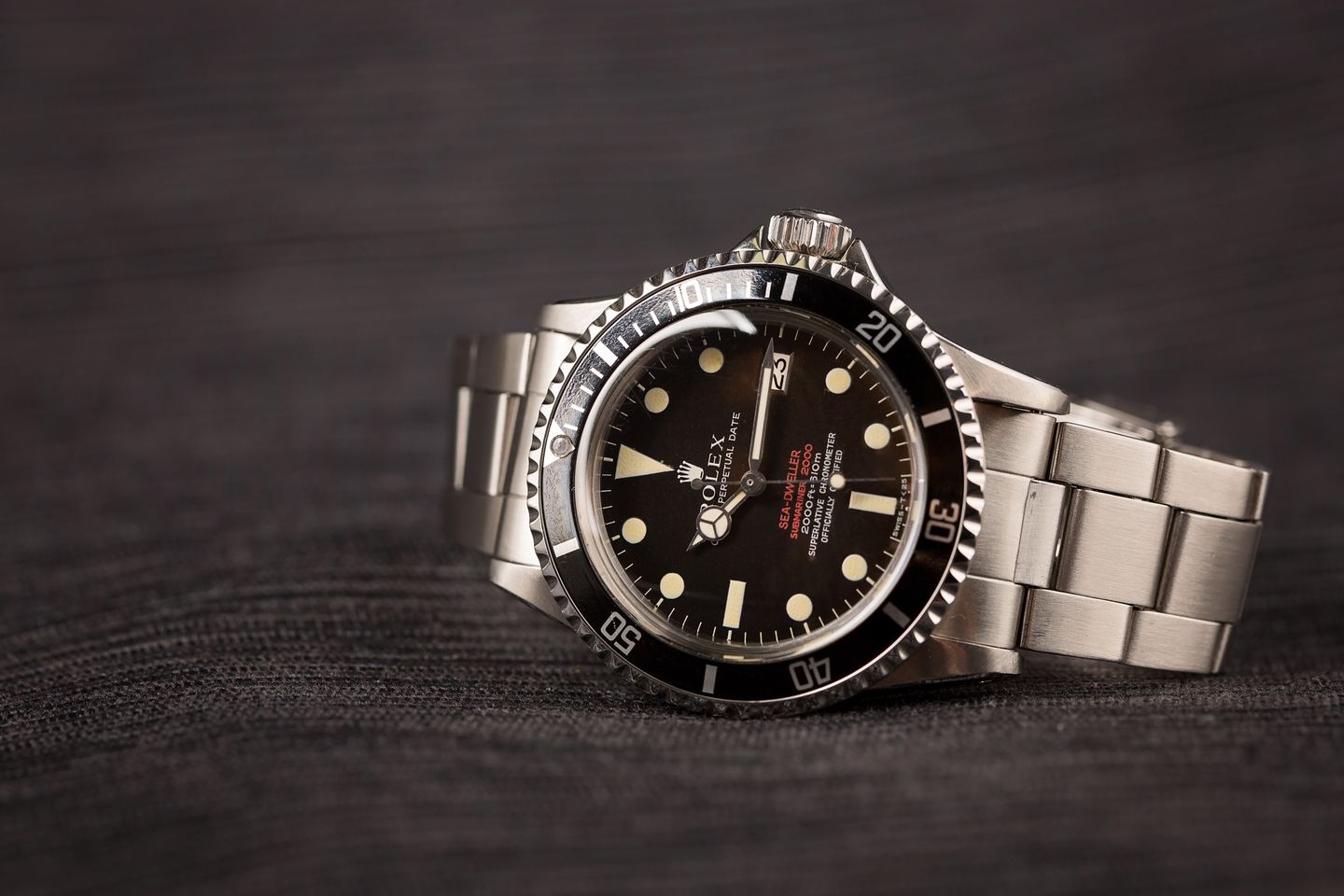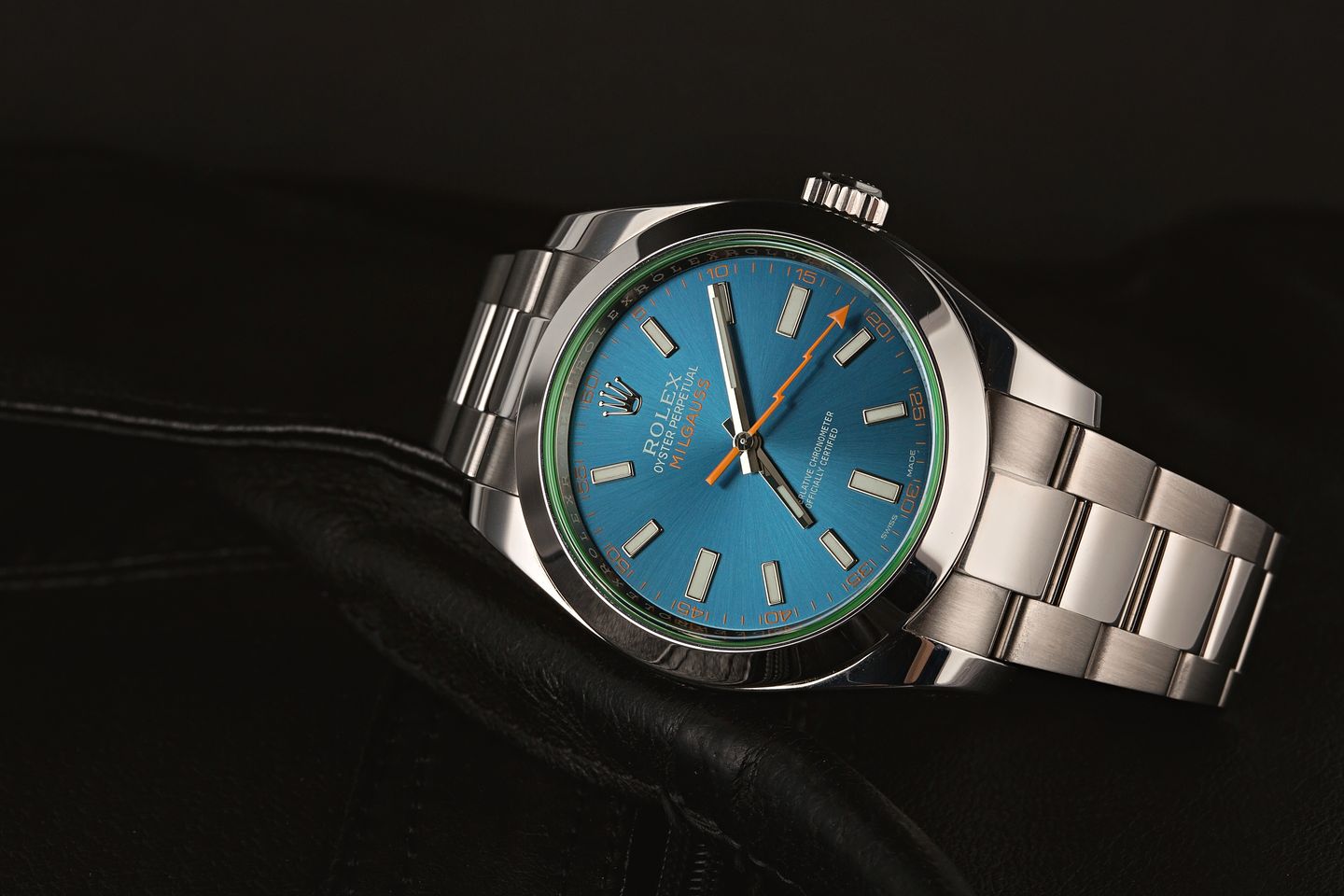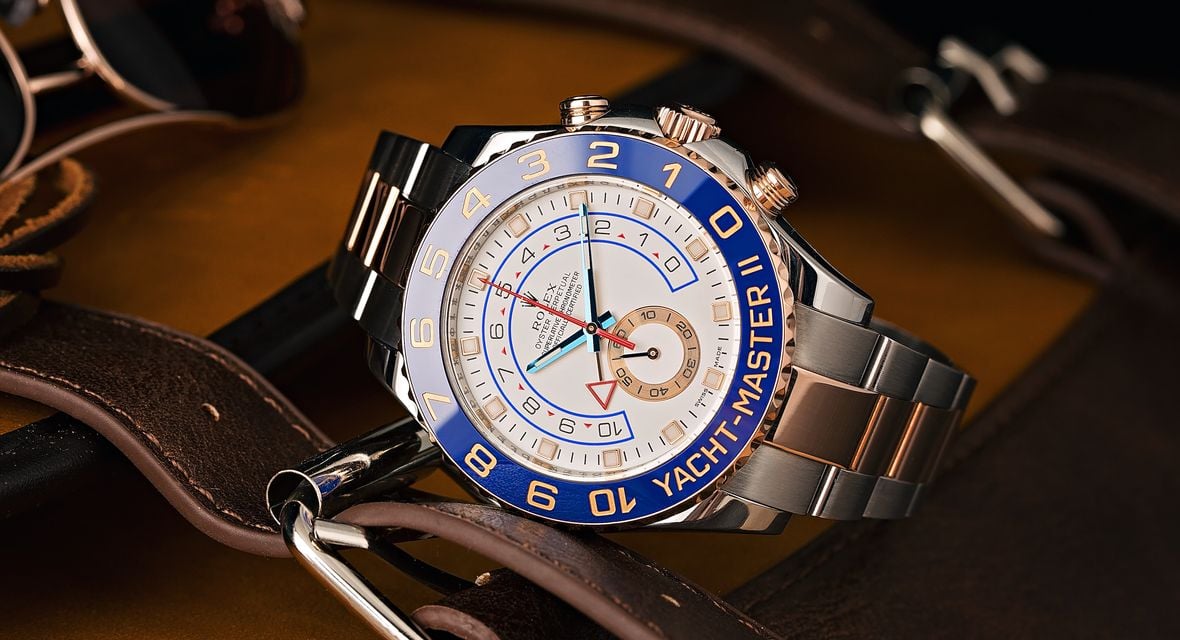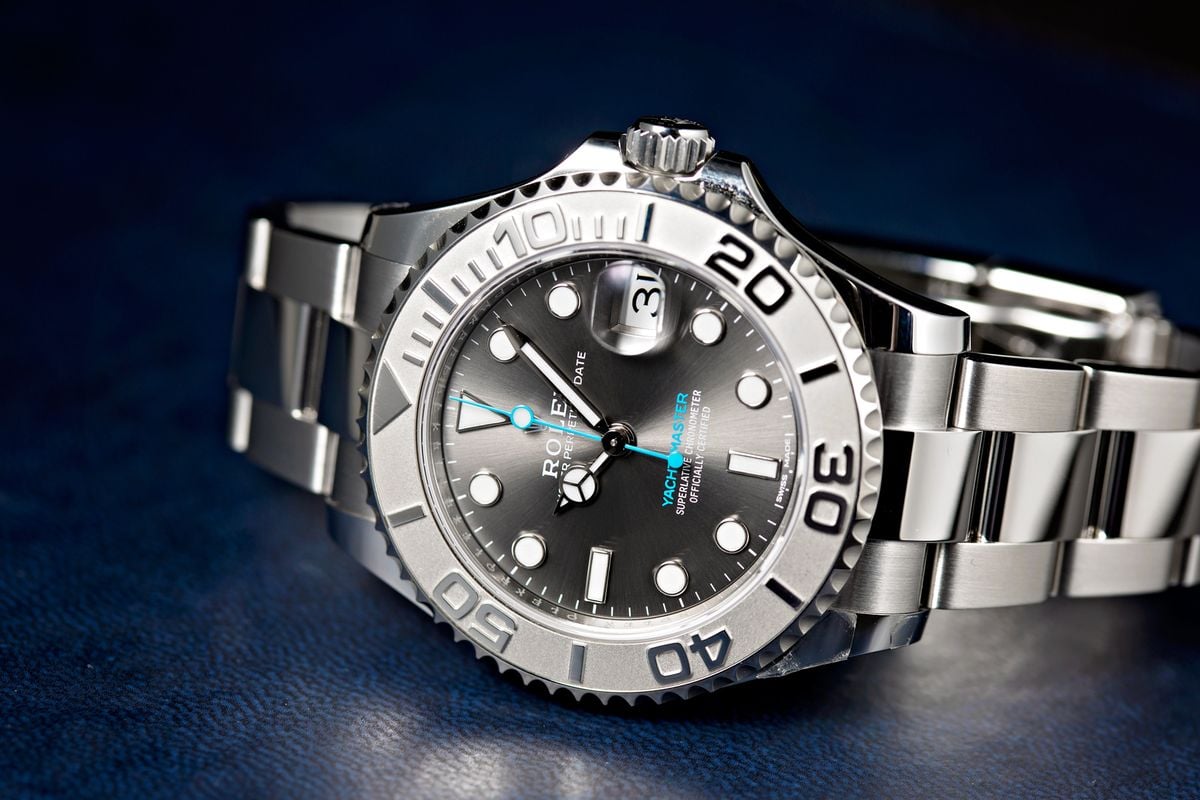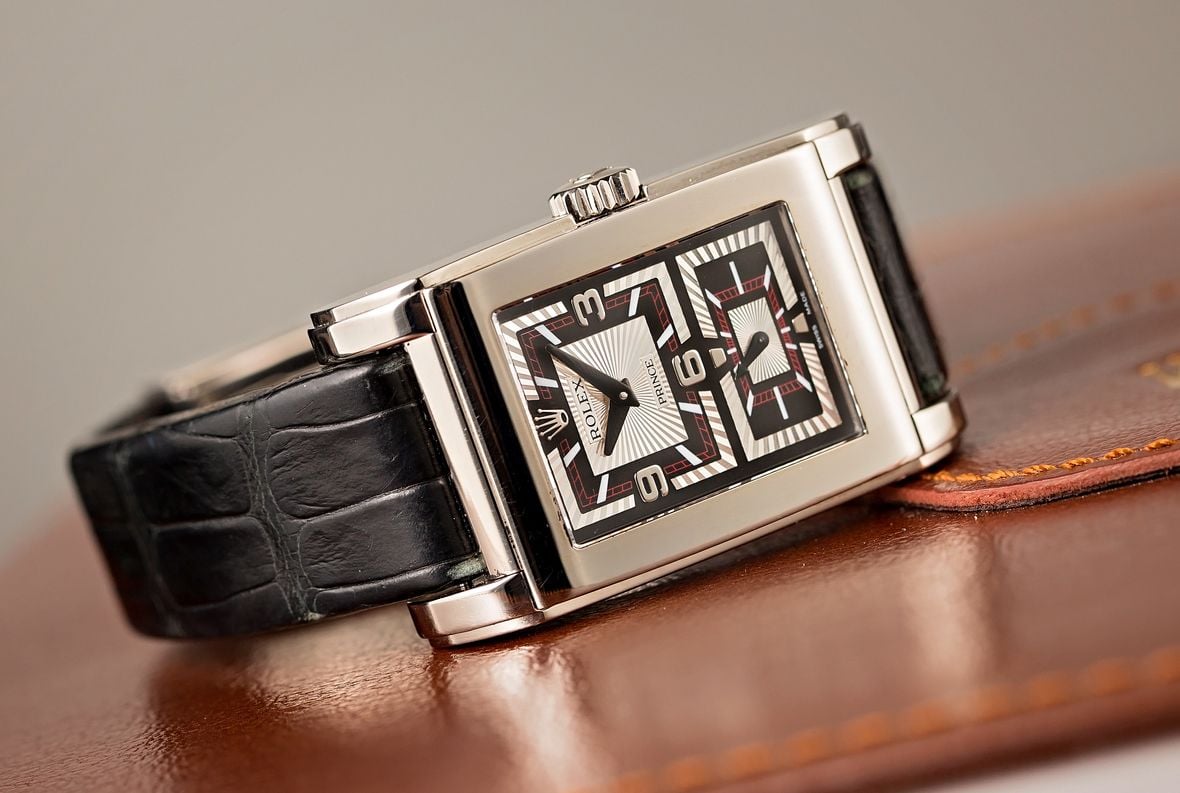
With the possible exception of a chronograph, a dual time zone complication is just about the most popular type of added functionality for luxury watches. An extremely useful feature for pilots and travelers in general, they have been a staple of the industry for decades. Within the Rolex range, there are actually three models with the capability; two of which are very similar, and the other offering a completely different interpretation.
The GMT-Master II and Explorer II models both display a second time via an extra 24-hour hand pointing out the hour on an engraved bezel. Really the only non-visual difference between them these days is that the GMT’s surround rotates while the Explorer’s is fixed. The Rolex Sky-Dweller, by comparison, uses a revolving 24-hour ring set within the dial. On your travels, home time is set on that disc, with an inverted triangle at the top indicating the current hour.
For now, we are going to ignore the Explorer II, as it wasn’t initially conceived as a travel watch and didn’t initially offer dual-time functionality. Instead, the 24-hour hand on the original Explorer II was simply a prominent AM/PM indicator to help its intended users (cave explorers) distinguish between night and day while working in total darkness. Therefore, our battle of the GMTs comes down to the Sky-Dweller and the GMT-Master II; one of the longest-running icons from Rolex versus the brand’s most recently introduced all-new creation.
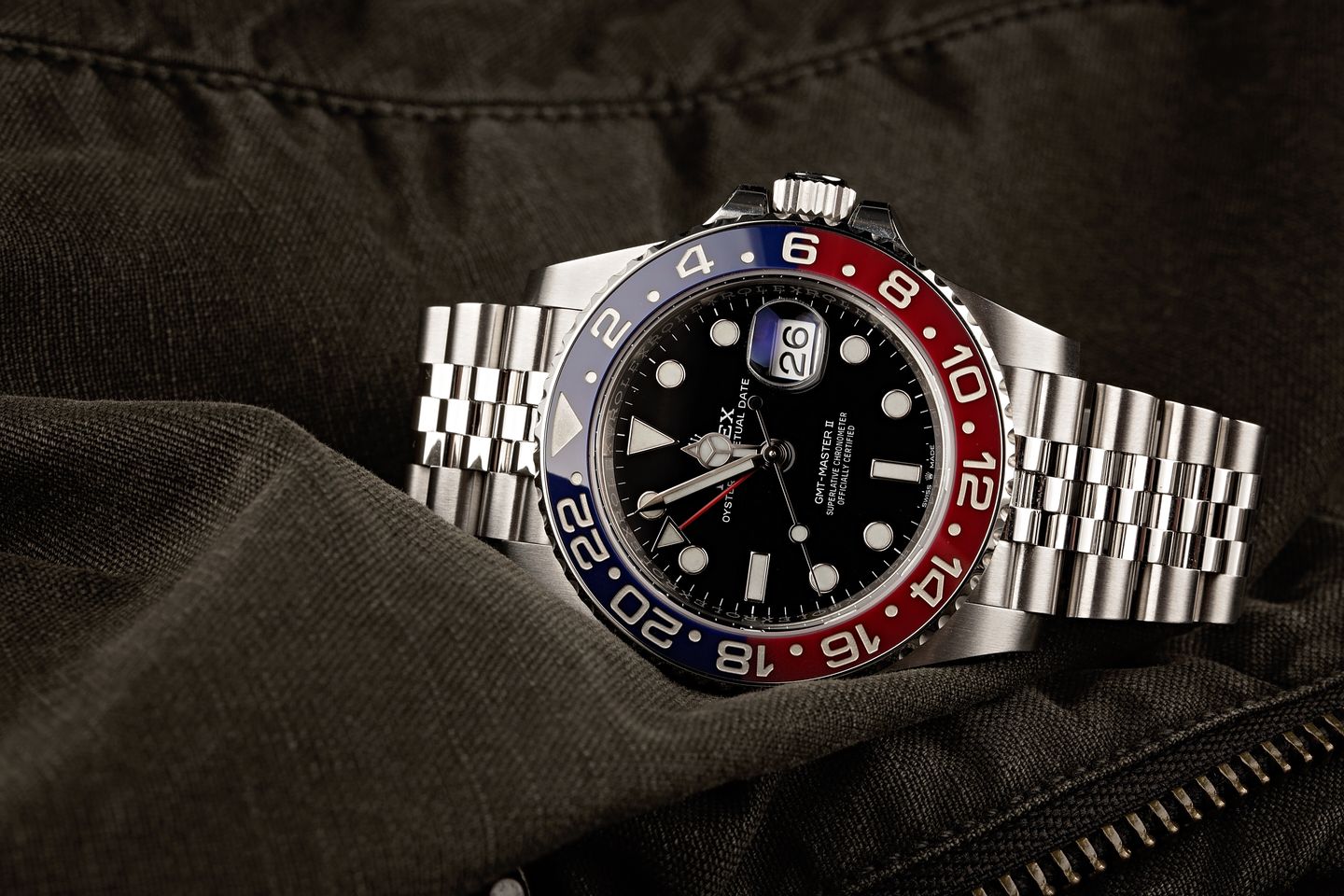
Rolex Sky-Dweller vs. GMT-Master II: Design
Technically speaking, the GMT-Master II is part of Rolex’s Professional Collection (or tool watches) while the Sky-Dweller belongs to the Classic Collection (or dress watches). At first glance, comparing the two would seem a little strange, as they both have their own completely separate roles and identities. But the labels Rolex puts on their individual ranges are all fairly subjective in the modern era. Just as the Submariner (the ultimate tool watch symbol) is very rarely seen underwater being used for its primary intended purpose, so the GMT-Master II made the crossover long ago from indispensable gadget to a recognized symbol of achievement. That being said, the GMT remains more versatile in terms of aesthetics than the Sky-Dweller.
Its face is simplicity itself, with hour markers the standard mix of dots and batons, now even larger on Rolex’s Maxi dial. Supremely easy to read, the additional hour hand always stands out in bright contrast against whichever background it is placed. And then, obviously, there’s the bezel. The one feature which has done more to endear the GMT-Master series to the public than any other over the years, in the current selection, exists in a choice of three color schemes.
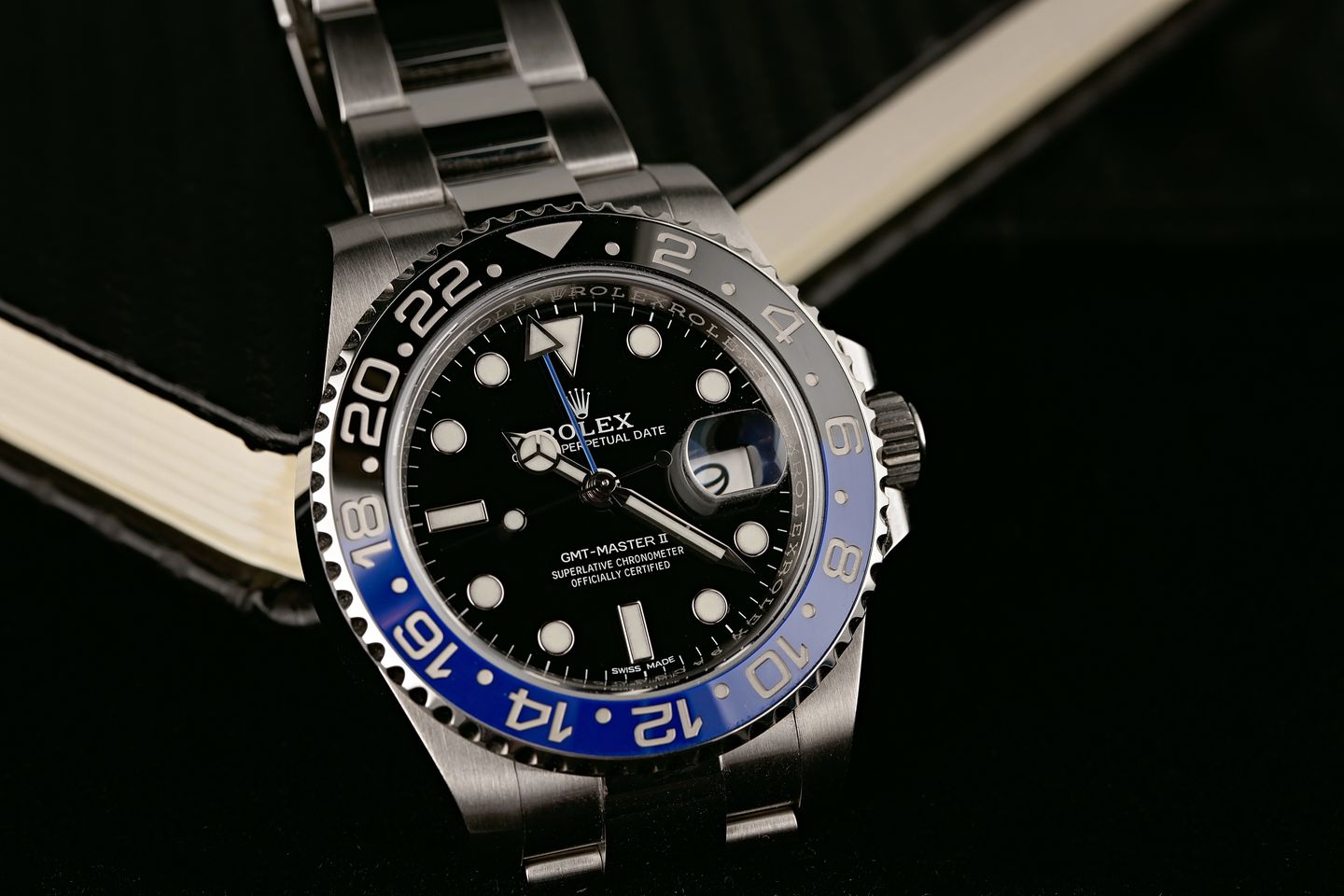
The black and blue (commonly nicknamed the Batman) was the first two-tone surround to be offered on Rolex’s proprietary Cerachrom ceramic. Elsewhere, the black and brown (known as the Root Beer) is a wonderful nostalgic throwback. But it is the blue and red Pepsi which has proved the most irresistible. The same colors seen on the debut GMT-Master from 1954, its reintroduction onto a steel watch last year saw it become the latest in a long line from Rolex to garner ‘money can’t buy’ status. The all-round adaptability of the model’s look sees it pair equally well with business suits as it does with jeans and t-shirts.
The Sky-Dweller, on the other hand, with its lack of crown guards and elegantly fluted bezel, could easily be mistaken for a Day-Date if you weren’t paying attention. It is certainly taken from the same mold, although at 42mm in diameter, it adds a couple of millimeters to both the largest President model as well as the GMT-Master II.
As for the dial, it is the busier of our two contestants; however, it has one additional (and very impressive) complication, which we will get to later. The main cause of complaint amongst the watch’s detractors is the 24-hour dial. Taking up the bottom two-thirds of the face, it not only decapitates the lower hour markers but also encroaches slightly on the Cyclops over the date window. However, the latest examples from Rolex have solved some of the issues by painting the disc the same shade as the rest of the dial, which makes it all a little less jarring. Earlier pieces had it in a contrasting color. Between them, it is perhaps the GMT-Master II which lends itself better to being an everyday and every situation watch; however, an equally strong case could be made for either model
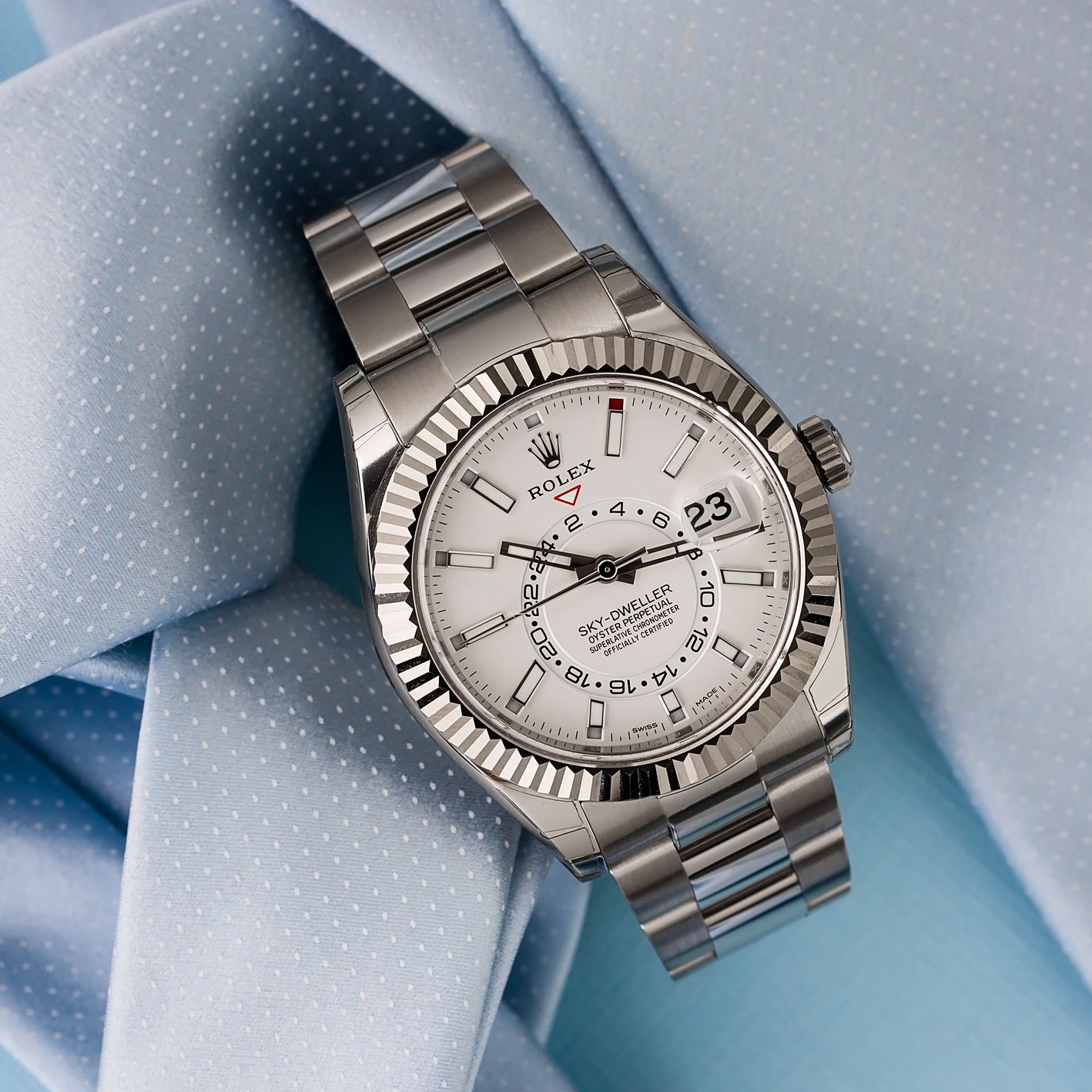
Rolex Sky-Dweller Versus GMT-Master II: Functionality
The beauty of the GMT-Master series has always resided in its simplicity. Its method of showing a second time zone, invented by Rolex themselves in association with Pan Am Airways in the 1950s, involves an extra hour hand, geared to run at half speed, making one rotation per day, and pointing to a numeral on the bezel. Since 1983 (the start of the GMT-Master II range), it has been possible to set the two hour hands independently of one another, giving the watch the ability to track three times zones at once.
As for the Sky-Dweller, its controversial inner dial may only have the capacity to display two zones, but it has something the GMT, along with every other watch from Rolex, has never had. Named SAROS, it is the brand’s very first annual calendar complication. Powered by the in-house Cal. 9001, coupled to the second generation of the Ring Command bezel introduced on the Yacht-Master II, a small aperture above each corresponding hour marker is used to designate the months of the year, with the current one filled in in a different color. It is a wonderfully elegant and practical approach to a complex challenge, and like all annual calendars, it only needs adjusting once a year, at the end of February.
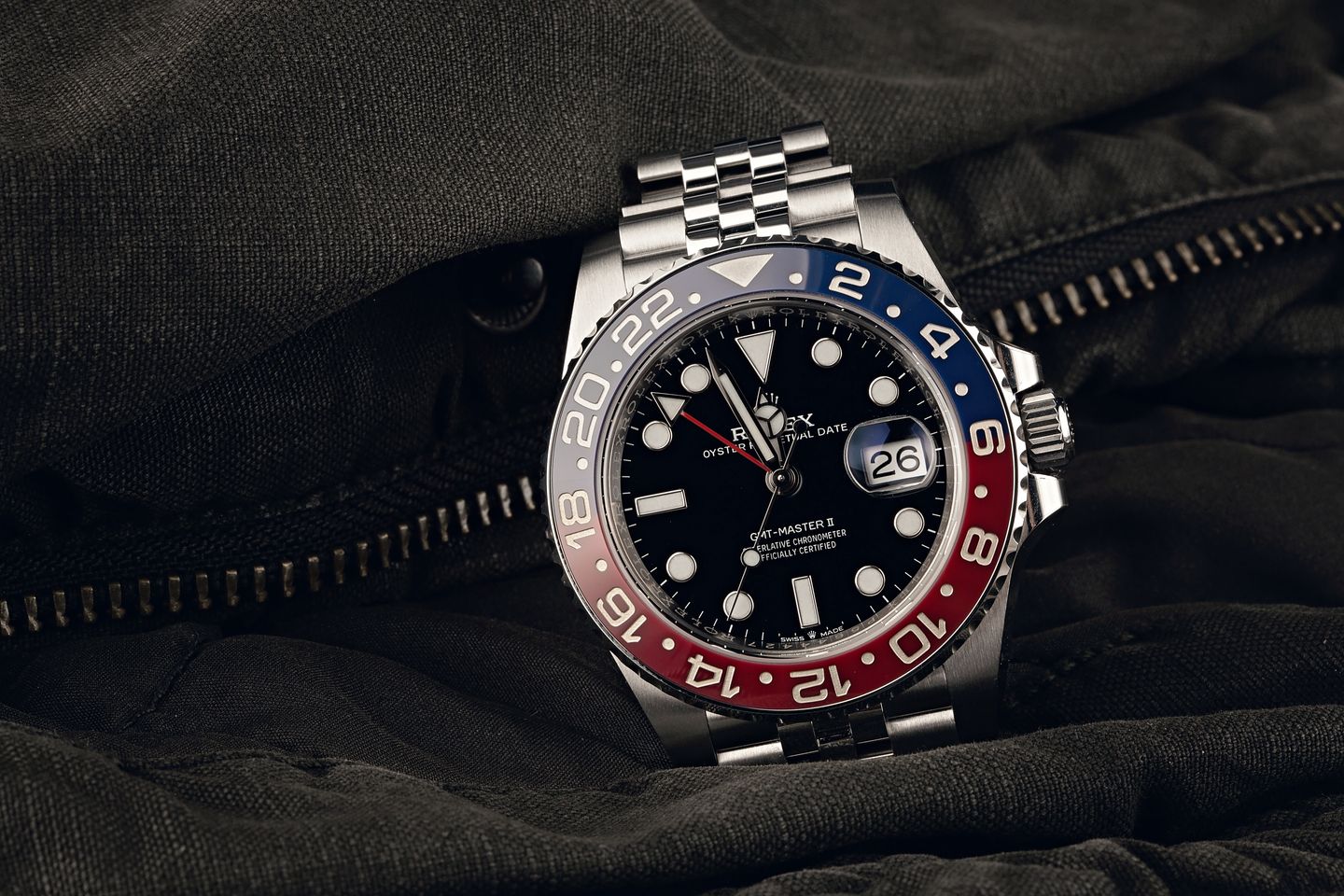
Just like the GMT-Master, but in a completely different way, the bezel is key. Consisting of 60 separate components, it is connected to the most complex movement from Rolex yet – one that itself requires 380 parts and seven patents. Acting as an analog function selector, the bezel can be turned to one of three positions, each one opening up a different operation which is then adjusted with the crown. Setting the Sky-Dweller therefore is extremely easy, something which can’t be said for annual calendar watches from many rival manufacturers.
This means that letting the Rolex Sky-Dweller wind down and stop is not as big of a problem as with others, and keeping it on a winder is no longer as important. It also does away with the need for pushers on the side of the case that would have detracted from its dress watch lines. Yet all that functionality does add to the thickness; the Sky-Dweller measures a full 2mm taller than the GMT-Master, something to consider if you prefer your wrist attire to be on the slimmer side.
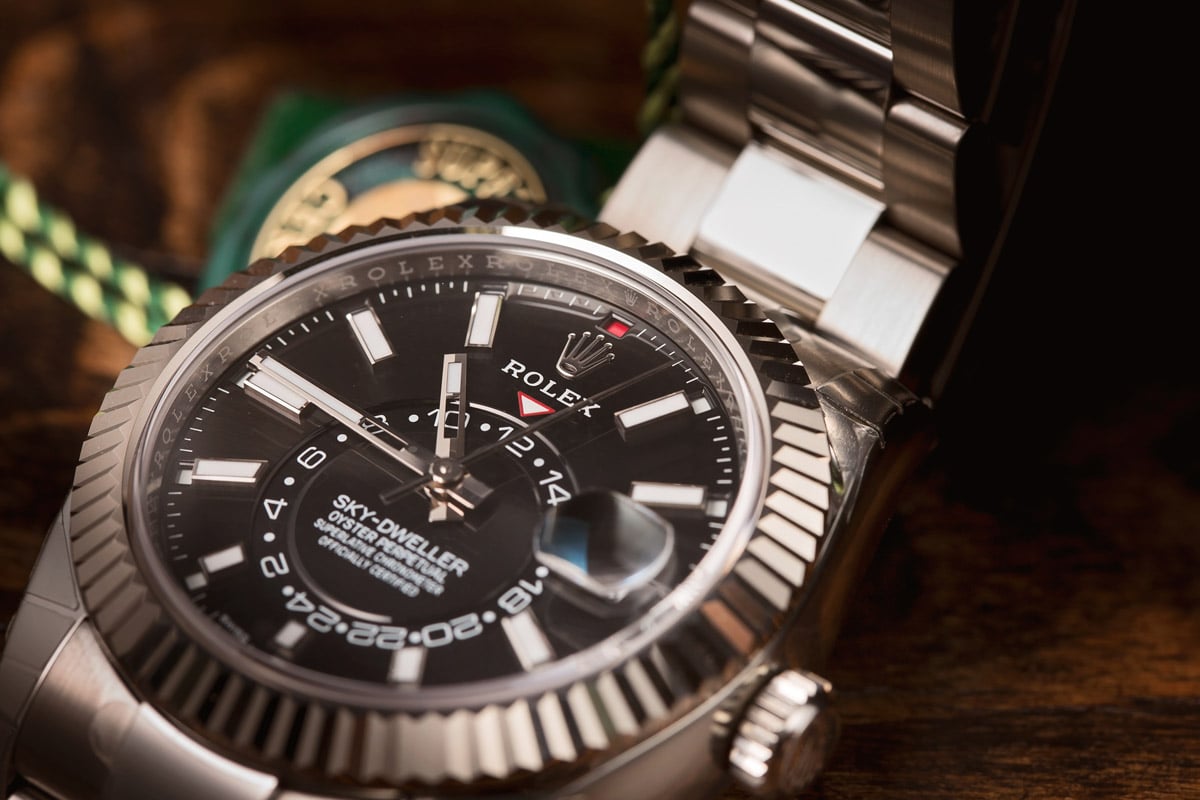
Rolex Sky-Dweller Versus GMT-Master II: Options and Price
When the Sky-Dweller was first released in 2012, it was exclusively offered in precious metals. That, and its impressive complications, immediately made it just about the most expensive piece in the Rolex lineup, leading to disappointing sales even among those who enjoyed its unorthodox looks. Since then, the range has grown considerably, including (to the joy of many), stainless steel versions arriving in 2017.
Of course, describing them as ‘stainless steel’ isn’t completely accurate. The six pieces from the contemporary range that qualify are actually Rolesor – Rolex’s name for their use of stainless steel and gold on a single watch. The cases are steel, while the bezels are cast in either white or yellow 18k gold. On the yellow versions, the winding crown and bracelet’s center links are also made from the precious metal. Even so, it has brought the prices down significantly, and a Rolesor Sky-Dweller is about a third of the price of a solid gold one.

However, that still makes it more expensive than the steel GMT-Master II (in theory). The reality is, being one of the most coveted watches on the planet complicated matters a little, and it is next to impossible to buy a steel GMT at retail through an Authorized Dealer unless you already have a longstanding relationship or an endless amount of patience. The stainless steel GMT-Master II is an insanely desirable watch and Rolex has mercilessly limited supply to make sure things stay that way. As a result, the only way to get your hands on one without having to endure a multi-year waiting list is as a pre-owned purchase, where you can expect it to cost at least twice the official retail price. Ironically, that actually makes it more expensive than a brand new Rolesor Sky-Dweller straight from a Rolex dealer.
It is a strange situation to be sure, where a watch with both a dual time zone function and an annual calendar, plenty of gold in its construction, and one of the most impressive movements we’ve seen, can cost less than a fairly simple, all-steel affair. But the laws of supply and demand are as old as the hills, and there is no denying that the Rolex GMT-Master II is a true legend in the horology industry. The Sky-Dweller is far too new to have reached the same mythical status, and might never will. However, it is undeniable that it is a remarkably accomplished watch, doing the same job (and a lot more) in a different and innovative way.
In the end, the one you go for is down to personal preference. Both are design and engineering masterpieces in their own way, and it is one of those happy situations where there is almost no such thing as the wrong choice.
